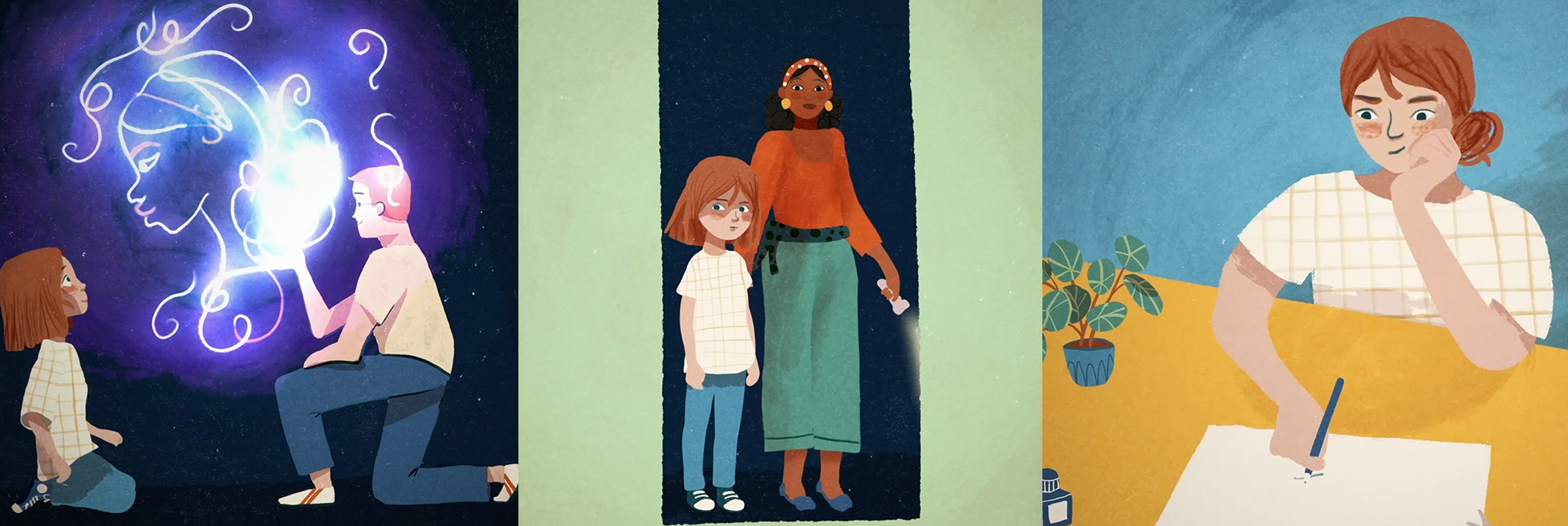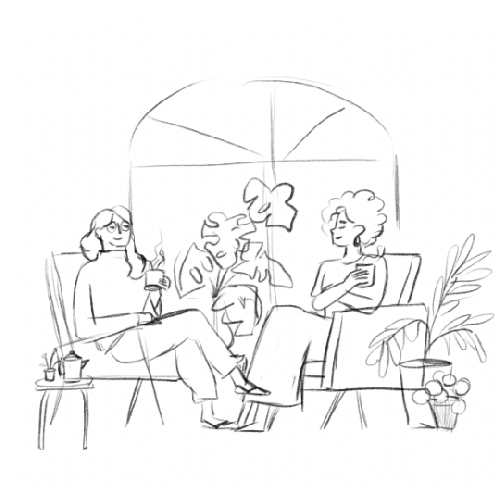NSPCC: Letting the Future In
Letting The Future In (LTFI) is a critically important NSPCC service, designed to help children and young people who've experienced sexual abuse, rebuild their lives.
Letting the Future In (LTFI) is a vital NSPCC service designed to help children and young people who have experienced sexual abuse, rebuild their lives. The service has recently undergone redevelopment, instigated by evidence highlighting a lack of support for children and adult victims.

The animation's ultimate aim was to increase the number of referrals, encourage social workers to join the NSPCC and assist in delivering LTFI. Alongside providing a helpful tool for parents and caregivers to better understand the service and its impact.
Creative Journey
At the start of our process, NSPCC provided the script featuring “Jo’s story”. We developed the creative direction and character profiles. To visualize mood and character progression, we used a careful mix of realistic and representational settings.

The storyline reflects the sensitive nature of the service, and it was crucial that we used a complimentary illustrative style.
This provided an opportunity to collaborate with illustrator and animator Coline Naujalis. Her painterly approach hit the right balance for tackling the subject matter whilst using her artistic mark-making to really accentuate the delicate storytelling journey.
Coline brought the fictional characters to life in a way that aims to resonate with the intended audience. Telling an emotional story and also highlighting the services, and critical role of parents and carers throughout the therapeutic process. Here Coline talks through elements of her creative process:
"The key point of the film is to show how getting help at the right time can change one’s life. The relationship between the two main characters is key to the piece. Therefore, I primarily focused on Jo and Rhiannon to give them personality and emotion... Giving particular attention to detail both in their appearance and expression. I reduced the colour palette to create harmony within the film, and finally also worked on adding texture.
The shadows are animated, and the film has a particular grain. Doing this provides an analogue sense to the film, which felt more human and sympathetic, and supports the relationship between the characters. In terms of the technical aspect, I animated the characters in Moho and composited all the elements in AE. Some particular moments, such as transitions, are made frame by frame in TVPaint.”
We especially loved telling the story in a painterly style. It’s grounded in artistic expression, which plays a key role in LTFI’s therapeutic techniques. The result is a narrative we hope connects with the audience. Whether they’re seeking help themselves or supporting someone else in accessing these vital services.
